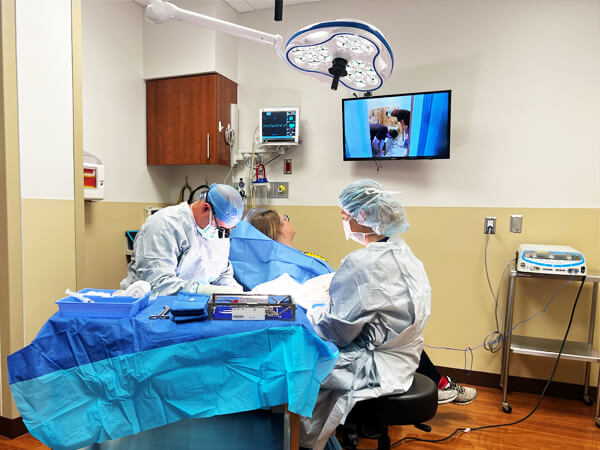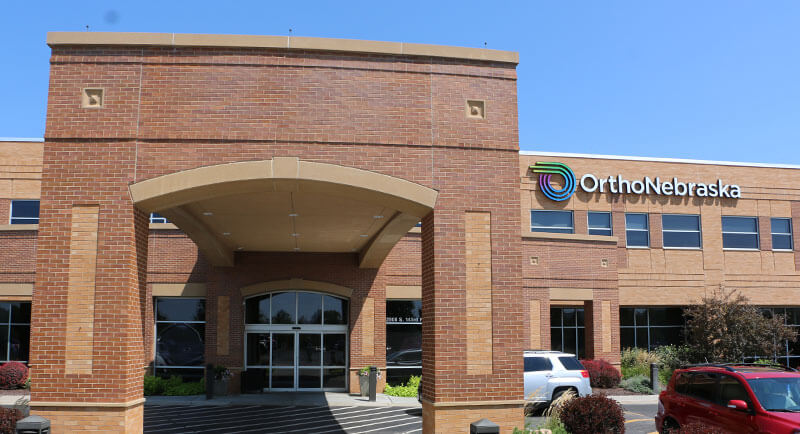What is WALANT?
WALANT is an acronym for Wide Awake Local Anesthesia No Tourniquet Surgery. This is medical terminology for the surgical approach to be used. As opposed to a specific surgical technique that addresses the bone, joint or other problem requiring surgery itself, an approach is something that can be used for many different types of surgeries. It consists of the facility or care setting, the type of anesthesia and some finer details of how your surgeon performs the procedure, most notably the start and end.
Using this approach, the patient is not put to sleep, but instead lidocaine and epinephrine are used so the patient cannot feel the hand or wrist during the brief time the surgeon actually needs to complete the procedure (less than 30 minutes). Hence, this technique is unique to hand and wrist surgery.
Why Choose OrthoNebraska?
At OrthoNebraska Hospital, WALANT is performed in a specially outfitted treatment room rather than an operating room or in a clinic, as is often done elsewhere. We believe this setting is optimal because it offers a lot of convenience for the patient, while still being able to take advantage of the knowledge and expertise of the nursing and support staff at our hospital in hand and wrist orthopedic surgery. The treatment rooms are specially equipped for hand and wrist surgeries and for your entertainment and also have a lower carbon footprint than a full operating room.
What are the Benefits of the WALANT Approach?
It’s Easy and Convenient. With dedicated treatment rooms, you don’t have to prepare like you would for a surgery in a traditional operating room. You’re in and out of our building in about an hour or rather than a full half day. There are no eating restrictions and no need to stop any regular medicaitons. You don’t have to worry about getting gowned up. Overall, it’s going to feel more like an involved office visit (such as an injection) than like a major surgery.
It’s Personalized to You. You choose what to wear, what music to listen to or TV to watch. On the other hand, you have the option to observe and can interact with your surgeon however you choose during the procedure. If you’re comfortable and when appropriate, your surgeon may even have you test the surgical repair in real-time to ensure it was done in the most optimal fashion and make any necessary adjustments.
We Don’t Compromise on Quality or Safety. Other surgeons may elect to do these procedures in the office or in the OR because they don’t have another option. We feel having treatment rooms that are equipped similarly to operating rooms, but for hand and wrist procedures and without the need for large anesthesia monitoring is the best setting for this approach. Additionally, the WALANT approach is safer for patients who have risks or negative history related to general anesthesia such as heart or lung conditions. Lastly, you can always trust in OrthoNebraska’s extremely low infection rates because our specialty is orthopedics and we take every precaution to protect you.
Are There Any Downsides to WALANT?
Your surgeon will not recommend or schedule a WALANT approach if it is not safe for you, which will be determined during an office visit prior to surgery. Beyond that, the issue patients struggle with is mostly mental. If you are squeamish or generally sensitive to the thoughts of a surgical environment, this approach may be more difficult for you. However, rest assured that:
- You will not be able to see anything due to the surgical draping placed immediately after you sit or lie down (unless you ask the team to see)
- We give you noise-canceling headphones (if you desire) and your music or TV of choice so you hear very little, except if the surgery team needs to ask you something.
- Procedures rarely last more than 30 minutes from when you sit or lie down to when you get up.
What Procedures Can I Have WALANT With?
The WALANT approach is appropriate for the vast majority of patients undergoing:
- Carpal Tunnel Release Surgery
- Trigger Finger Release Surgery
- De Quervain’s Tendon Release Surgery
- Mass or Cyst Excisions
The WALANT approach may be appropriate for select patients undergoing:
- Nailbed or Fingertip Injury Repair
Ultimately, each case is unique. Please ask your surgeon if you are interested in having a procedure done using the WALANT approach.







